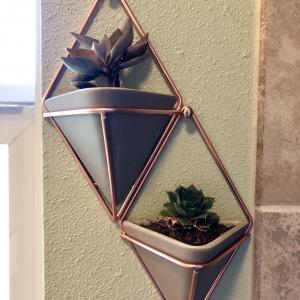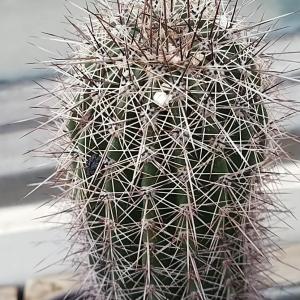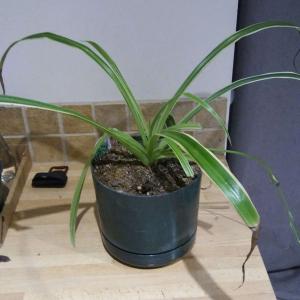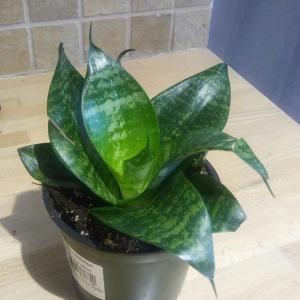文章
Miss Chen
2017年12月13日

Description: This perennial plant becomes about 2-3' tall when it is mature, branching occasionally in the upper half. The stems are covered in a dense mat of short white hairs. The alternate leaves are up to 3½" long and 1" across. They are usually oblanceolate, narrowly ovate, or linear. The lower leaves may have a few lobes or coarse teeth towards their tips, while the upper leaves have smooth margins. Like the stems, the leaves have a dense mat of short white hairs, especially on the lower surface. This variety of White Sage has dense white hairs on the upper surface of the leaves as well, except for the oldest leaves toward the bottom of the plant. The leaves are sessile against the stem, or have short petioles. Some of the upper stems terminate in elongated spikes or narrow racemes of compound flowers. Each flowerhead is only 1/8" (3 mm.) across, and contains numerous whitish green disk florets that are inconspicuous. The blooming period is late summer to early fall, and lasts about 2-3 weeks. There is no floral scent, although the foliage of this plant is quite aromatic. Pollination is by wind, rather than insects. The tiny seeds are without tufts of hair, but are small enough to be distributed by the wind. The root system is rhizomatous, and can form a dense mat of roots near the surface of the ground. As a result, this plant has a strong tendency to form clonal colonies that exclude other plants.

Cultivation: The preference is full sun and dry conditions. Poor soil containing hardpan clay, rocky material, or sand is actually preferred as a medium for growth, as this reduces competition from other plants. The foliage is very attractive and doesn't have significant problems with disease. This plant can spread aggressively in some situations.
Range & Habitat: White Sage is occasional in northern and western Illinois, but rare or absent in other parts of the state (see Distribution Map). Some authorities think this plant is native to Illinois (e.g., Britton & Brown), while others believe it is adventive from the west (e.g., Mohlenbrock). It is usually found along railroads and roadsides, and sometimes in dry upland areas of prairies. Cultivated forms of this plant can be found in flower gardens because of the attractive foliage. If this plant is native, Illinois would be at the eastern boundary of its distribution.
Faunal Associations: The flowers don't attract insects because they are wind-pollinated. White Sage has the potential to cause allergies in humans because of this pollen, but this species isn't very common within the state. Several grasshopper species feed on the foliage of White Sage (see Grasshopper Table), including an uncommon oligolectic grasshopper, Hypochlora alba (Cudweed Grasshopper), which often feeds hides in the foliage during the day. Other insect feeders include Ophraella artemisiae (Leaf Beetle sp.), Macrosiphoniella ludovicianae (Aphid sp.), and the larvae of Phaneta argenticostana (Tortricid Moth sp.); the moth larvae feed on the seedheads. Mammalian herbivores don't consume this plant because the aromatic foliage has a bitter taste. The seeds are too small to be of much interest to birds.
Photographic Location: The photographs were taken at Meadowbrook Park in Urbana, Illinois, where a small colony of plants was located in a restored prairie. The plants were not in bloom.
Comments: This variety of White Sage has striking foliage. The typical variety, Artemisia ludoviciana ludoviciana, has greener foliage with fewer white hairs. The leaves of this latter variety are supposed to be broader and more likely to have lobes or serrated margins toward the leaf tips. However, the hairiness and shape of the leaves can be rather variable for this species, regardless of the variety. Other Artemisia spp. have foliage that is more green and pinnately lobed. A few species, such as the introduced Artemisia vulgaris (Mugwort), have silvery hairs on the lower surface of the leaves, but their upper surface is predominantly green.

Cultivation: The preference is full sun and dry conditions. Poor soil containing hardpan clay, rocky material, or sand is actually preferred as a medium for growth, as this reduces competition from other plants. The foliage is very attractive and doesn't have significant problems with disease. This plant can spread aggressively in some situations.
Range & Habitat: White Sage is occasional in northern and western Illinois, but rare or absent in other parts of the state (see Distribution Map). Some authorities think this plant is native to Illinois (e.g., Britton & Brown), while others believe it is adventive from the west (e.g., Mohlenbrock). It is usually found along railroads and roadsides, and sometimes in dry upland areas of prairies. Cultivated forms of this plant can be found in flower gardens because of the attractive foliage. If this plant is native, Illinois would be at the eastern boundary of its distribution.
Faunal Associations: The flowers don't attract insects because they are wind-pollinated. White Sage has the potential to cause allergies in humans because of this pollen, but this species isn't very common within the state. Several grasshopper species feed on the foliage of White Sage (see Grasshopper Table), including an uncommon oligolectic grasshopper, Hypochlora alba (Cudweed Grasshopper), which often feeds hides in the foliage during the day. Other insect feeders include Ophraella artemisiae (Leaf Beetle sp.), Macrosiphoniella ludovicianae (Aphid sp.), and the larvae of Phaneta argenticostana (Tortricid Moth sp.); the moth larvae feed on the seedheads. Mammalian herbivores don't consume this plant because the aromatic foliage has a bitter taste. The seeds are too small to be of much interest to birds.
Photographic Location: The photographs were taken at Meadowbrook Park in Urbana, Illinois, where a small colony of plants was located in a restored prairie. The plants were not in bloom.
Comments: This variety of White Sage has striking foliage. The typical variety, Artemisia ludoviciana ludoviciana, has greener foliage with fewer white hairs. The leaves of this latter variety are supposed to be broader and more likely to have lobes or serrated margins toward the leaf tips. However, the hairiness and shape of the leaves can be rather variable for this species, regardless of the variety. Other Artemisia spp. have foliage that is more green and pinnately lobed. A few species, such as the introduced Artemisia vulgaris (Mugwort), have silvery hairs on the lower surface of the leaves, but their upper surface is predominantly green.
0
0
文章
Miss Chen
2017年12月13日

Description: This plant is a biennial or short-lived perennial. During the 1st year, a rosette of basal leaves is produced. The basal leaves are up to 4" long and 3" across; they are deeply pinnatifid or bipinnatifid with narrow linear lobes (up to 2" long and less than 3 mm. across). The upper surface of basal leaves is grayish blue and canescent; the petioles of these leaves are variable in length. During the 2nd and later years (if any), this plant bolts to become 1½-3½' tall, while the rosette of basal leaves withers away. The central stem and ascending lateral stems are light green to dark red and terete. Usually the young tips of stems are tomentose (with short white cobwebby pubescence), otherwise they are mostly glabrous. The cauline leaves alternate along these stems; they are more common along the lower half of the central stem and lower lateral stems. The lower cauline leaves resemble the basal leaves, except they are more green. Middle cauline leaves are smaller in size and less divided into linear lobes, while the upper cauline leaves are short (less than 1" long) and linear in shape. The upper surface of these leaves is green to whitish green, flat, and tomentose, becoming more glabrous with age. The lower surface of these leaf leaves is green, rounded (convex), and glabrous. The foliage is not strongly aromatic.
The central stem (and upper lateral stems, if any) terminates in a panicle of flowerheads that is about 4-18" long and about one-half as much across. Leafy linear bracts occur along the rachis (central stalk) and lateral branches of this panicle. The rachis and lateral branches are light green to dark red and glabrous to canescent. The rachis of the panicle is more or less erect, while its primary lateral branches are ascending. Individual flowerheads are whitish green or yellowish green and 2-4 mm. long and similarly across. Each flowerhead has 8-30 inner disk florets that are perfect and 5-20 outer disk florets that are pistillate. Each inner floret consists of a narrow tubular corolla with 5 teeth along its upper rim, some fertile stamens, and an abortive ovary that is sterile. Each outer floret consists of a narrow tubular corolla with 2-3 teeth along its upper rim and a fertile ovary with a divided style. The base of each flowerhead is surrounded by appressed overlapping bracts (phyllaries); individual bracts are lanceolate to ovate, mostly green, and up to 2 mm. long. At maturity, the flowerheads droop from short pedicels. The blooming period occurs from mid-summer to early autumn, lasting about 2-3 weeks. The florets are cross-pollinated primarily by the wind. Afterwards, the outer florets of the flowerheads are replaced by bullet-shaped achenes that are up to 1.0 mm. in length. These achenes are without tufts of hair or a crown of scales; they are usually distributed only a short distance from the mother plant by the wind. The root system consists of a woody taproot or caudex with fibrous roots. This plant reproduces by reseeding itself.

Cultivation: The preference is full sun, dry conditions, and sandy soil. During hot dry periods, it is not uncommon for the lower leaves to wither away. This plant has some tolerance to road salt.
Range & Habitat: The native Beach Wormwood is occasional in northern Illinois, and it is also occasional in the central section of the state along the Illinois River, otherwise it is rare or absent (see Distribution Map). Only ssp. caudata occurs within the state; the typical subspecies is found in Europe. Habitats include semi-stabilized sand dunes along Lake Michigan, dry areas of beaches, dry sand prairies, openings in sandy savannas, rocky glades, ledges along cliffs, sand bars and gravel bars along major rivers, abandoned sandy fields, and sandy roadsides. Beach Wormwood prefers sandy areas where there has been some disturbance from wind or wildfires.

Faunal Associations: To a limited extent, Beach Wormwood may be cross-pollinated by small bees and flies seeking pollen from the flowerheads. Other insects feed destructively on Beach Wormwood and other wormwood species (Artemisia spp.). Two plant bugs, Europiella bakeri and Lygus atritibialis, have been observed to feed on Beach Wormwood specifically (Knight, 1941). Other insects that feed on wormwood species in open areas include such grasshoppers as Hesperotettix viridis (Snakeweed Grasshopper), Hypochlora alba (Cudweed Grasshopper), and Melanoplus angustipennis (Narrow-winged Sand Grasshopper); see Vickery & Kevan (1985). The caterpillars of several butterflies and moths feed on the foliage and/or flowerheads of these plants, including Vanessa cardui (Painted Lady), Vanessa virginiensis (American Painted Lady), Scrobipalpula artemisiella (Wormseed Webworm), Phaneta argenticostana (Tortricid moth sp.), and Protoschinia nuchalis (Wormseed Flower Moth); see Marcovitch (1916), Marshall (2006), and various internet websites. Several aphids (Macrosiphoniella spp.) suck plant juices from the stems, leaves, and/or flowerheads of wormseed species (Hottes & Frison, 1931; Blackman & Eastop, 2013). Because of the bitter taste of the foliage and its mild toxicity, cattle and other mammalian herbivores in the Midwestern region usually avoid consumption of Beach Wormwood and similar species. However, vertebrate wildlife in the Western region of the United States utilize these plants as sources of food to a greater extent (Martin et al., 1951/1961).

Photographic Location: Sand dunes along Lake Michigan at Indiana Dunes State Park in NW Indiana.
Comments: Beach Wormwood is the primary host of a rare parasitic plant, Orobanche fasciculata (Clustered Broomrape). The pale flowering stalk of this parasitic plant can be observed near Beach Wormwood during late spring or summer. A similar species, Orobanche ludoviciana (Prairie Broomrape), is also parasitic on Beach Wormwood, but this latter species is parasitic on a variety of other species in the Asteraceae. Among the several Artemisia spp. in Illinois, Beach Wormwood can be identified by the toothless linear lobes (less than 3 mm. across) of its deeply divided leaves. It is also unusual in having perfect florets with sterile ovaries, which are normally fertile in other Artemisia spp. Another common name of Artemisia campestris caudata is Field Sagewort. A scientific synonym of this species is Artemisia caudata.
The central stem (and upper lateral stems, if any) terminates in a panicle of flowerheads that is about 4-18" long and about one-half as much across. Leafy linear bracts occur along the rachis (central stalk) and lateral branches of this panicle. The rachis and lateral branches are light green to dark red and glabrous to canescent. The rachis of the panicle is more or less erect, while its primary lateral branches are ascending. Individual flowerheads are whitish green or yellowish green and 2-4 mm. long and similarly across. Each flowerhead has 8-30 inner disk florets that are perfect and 5-20 outer disk florets that are pistillate. Each inner floret consists of a narrow tubular corolla with 5 teeth along its upper rim, some fertile stamens, and an abortive ovary that is sterile. Each outer floret consists of a narrow tubular corolla with 2-3 teeth along its upper rim and a fertile ovary with a divided style. The base of each flowerhead is surrounded by appressed overlapping bracts (phyllaries); individual bracts are lanceolate to ovate, mostly green, and up to 2 mm. long. At maturity, the flowerheads droop from short pedicels. The blooming period occurs from mid-summer to early autumn, lasting about 2-3 weeks. The florets are cross-pollinated primarily by the wind. Afterwards, the outer florets of the flowerheads are replaced by bullet-shaped achenes that are up to 1.0 mm. in length. These achenes are without tufts of hair or a crown of scales; they are usually distributed only a short distance from the mother plant by the wind. The root system consists of a woody taproot or caudex with fibrous roots. This plant reproduces by reseeding itself.

Cultivation: The preference is full sun, dry conditions, and sandy soil. During hot dry periods, it is not uncommon for the lower leaves to wither away. This plant has some tolerance to road salt.
Range & Habitat: The native Beach Wormwood is occasional in northern Illinois, and it is also occasional in the central section of the state along the Illinois River, otherwise it is rare or absent (see Distribution Map). Only ssp. caudata occurs within the state; the typical subspecies is found in Europe. Habitats include semi-stabilized sand dunes along Lake Michigan, dry areas of beaches, dry sand prairies, openings in sandy savannas, rocky glades, ledges along cliffs, sand bars and gravel bars along major rivers, abandoned sandy fields, and sandy roadsides. Beach Wormwood prefers sandy areas where there has been some disturbance from wind or wildfires.

Faunal Associations: To a limited extent, Beach Wormwood may be cross-pollinated by small bees and flies seeking pollen from the flowerheads. Other insects feed destructively on Beach Wormwood and other wormwood species (Artemisia spp.). Two plant bugs, Europiella bakeri and Lygus atritibialis, have been observed to feed on Beach Wormwood specifically (Knight, 1941). Other insects that feed on wormwood species in open areas include such grasshoppers as Hesperotettix viridis (Snakeweed Grasshopper), Hypochlora alba (Cudweed Grasshopper), and Melanoplus angustipennis (Narrow-winged Sand Grasshopper); see Vickery & Kevan (1985). The caterpillars of several butterflies and moths feed on the foliage and/or flowerheads of these plants, including Vanessa cardui (Painted Lady), Vanessa virginiensis (American Painted Lady), Scrobipalpula artemisiella (Wormseed Webworm), Phaneta argenticostana (Tortricid moth sp.), and Protoschinia nuchalis (Wormseed Flower Moth); see Marcovitch (1916), Marshall (2006), and various internet websites. Several aphids (Macrosiphoniella spp.) suck plant juices from the stems, leaves, and/or flowerheads of wormseed species (Hottes & Frison, 1931; Blackman & Eastop, 2013). Because of the bitter taste of the foliage and its mild toxicity, cattle and other mammalian herbivores in the Midwestern region usually avoid consumption of Beach Wormwood and similar species. However, vertebrate wildlife in the Western region of the United States utilize these plants as sources of food to a greater extent (Martin et al., 1951/1961).

Photographic Location: Sand dunes along Lake Michigan at Indiana Dunes State Park in NW Indiana.
Comments: Beach Wormwood is the primary host of a rare parasitic plant, Orobanche fasciculata (Clustered Broomrape). The pale flowering stalk of this parasitic plant can be observed near Beach Wormwood during late spring or summer. A similar species, Orobanche ludoviciana (Prairie Broomrape), is also parasitic on Beach Wormwood, but this latter species is parasitic on a variety of other species in the Asteraceae. Among the several Artemisia spp. in Illinois, Beach Wormwood can be identified by the toothless linear lobes (less than 3 mm. across) of its deeply divided leaves. It is also unusual in having perfect florets with sterile ovaries, which are normally fertile in other Artemisia spp. Another common name of Artemisia campestris caudata is Field Sagewort. A scientific synonym of this species is Artemisia caudata.
0
0
文章
Miss Chen
2017年12月13日

Description: This perennial plant initially forms a tuft of low basal leaves. The basal leaves are very similar in appearance to the lower cauline leaves (to be described shortly), except their petioles are somewhat longer. During the spring, this plant bolts, becoming 3-4' tall and unbranched, except near the inflorescence. The stout central stem is light green, terete, and glabrous; it has conspicuous longitudinal veins that are red. The cauline leaves are alternate, becoming smaller and less abundant as they ascend the central stem. The lower cauline leaves are up to 7" long and 4" across; they are broadly elliptic in shape and their margins are smooth to coarsely dentate. The upper cauline leaves are up to 4" long and 3" across; they are broadly ovate to elliptic in shape and their margins are smooth to coarsely dentate. The leaves are medium green, except along their margins, where they are often greenish white to reddish green. The leaves are glabrous and their texture is somewhat succulent (thick and rubbery); their primary veins are usually parallel. The petioles of the leaves are stout, glabrous, and greenish white to reddish green. The petioles of basal leaves are up to 4" long, while the petioles of cauline leaves are up to 2" long, becoming shorter as they ascend the central stem. The uppermost cauline leaves are often sessile.
The central stem terminates in a flat-headed panicle of flowerheads spanning 3-10" across. The structure of this panicle is relatively irregular and loose. The branches of the panicle are greenish white to white, more or less terete, glabrous, and sometimes glaucous. At maturity, these flowerheads are about 8-10 mm. long, 4-5 mm. across, broadly oblongoid-ellipsoid, and 5-keeled. The sides of each flowerhead consist of 5 phyllaries (floral bracts) in a single series; these phyllaries are greenish white to white, broadly elliptic in shape, glabrous, and strongly keeled. The keels of these phyllaries have white-membranous wings. Within the interior of each flowerhead, there are 5 perfect disk florets; these florets are slightly exserted from the phyllaries. The corollas of these disk florets are greenish white to reddish white, narrowly cylindrical in shape, and 5-lobed. The corolla lobes are linear-lanceolate and strongly recurved. The blooming period occurs from early to mid-summer, lasting about 3-4 weeks for a colony of plants. There is no noticeable floral scent. Afterwards, the florets are replaced by achenes about 4-5 mm. long that are dark brown, narrowly bullet-shaped, and longitudinally ribbed. At their apices, these achenes have spreading tufts of white hair; they are distributed to some extent by the wind. The root system consists of a shallow crown with coarse fibrous roots. This plant spreads by reseeding itself.

Cultivation: The preference is full to partial sun, moist conditions, and soil containing some decaying organic matter. This plant tolerates occasional periods of standing water. Soil with either a high or low pH is tolerated. Foliar disease doesn't appear to be troublesome.
Range & Habitat: This uncommon plant occurs primarily in NE Illinois, and scattered counties elsewhere (see Distribution Map), where it is native. At one time, large populations of Prairie Indian Plantain occurred in wetland areas, particularly in the Chicago region, but they have been largely destroyed by modern development. This plant still occurs in such habitats as moist black soil prairies, dolomite prairies, moist meadows along rivers, savannas, thickets, marshes, fens, remnant bogs, and calcareous seeps. In developed areas, it may occur along ditches near railroads and roadsides. This is an indicator plant of high quality habitat.

Faunal Associations: The flowers of Prairie Indian Plantain appear to attract only a few insect visitors. Those that have been observed include the parasitoid Halictid bee Sphecodes dichrous, Myzinum quinquecinctum (Five-banded Tiphiid Wasp), the butterfly Lycaena hyllus (Bronze Copper), and Lygaeus turcicus (False Milkweed Bug). These insects were feeding on nectar (Robertson, 1929). Both the adults and larvae of an oligophagous Lizard beetle, Languria bicolor, feed destructively on species of Indian Plantain (Arnoglossum); the adults chew holes in the leaves, while the larvae live in the stems (Vaurie, 1948). The larvae of a Gracillariid moth, Phyllocnistis insignis, form serpentine mines in the leaves of Indian Plantain and other genera in the Aster family (Microleps website, 2010). At the present time, information about this plant's relationships to vertebrate animals is unavailable.

Photographic Location: The photographs were taken at Loda Cemetery Prairie in Iroquois County, Illinois.
Comments: While the flowerheads are not particularly showy, the thick rubbery leaves provide Prairie Indian Plantain with a presence that is quite interesting and different. This is the only Arnoglossum species in Illinois that has basal leaves and lower cauline leaves that are shaped like the leaves of broad-leaved plantains (e.g., Plantago major and Plantago rugelii). Other species of this genus have basal leaves and lower cauline leaves that are more broad and more deeply lobed or toothed – this is probably an accommodation to the lower light levels of the woodland habitats in which they are more likely to occur. While Prairie Indian Plantain is often regarded as a wetland species, it also occurs in moist meadows and prairies.
The central stem terminates in a flat-headed panicle of flowerheads spanning 3-10" across. The structure of this panicle is relatively irregular and loose. The branches of the panicle are greenish white to white, more or less terete, glabrous, and sometimes glaucous. At maturity, these flowerheads are about 8-10 mm. long, 4-5 mm. across, broadly oblongoid-ellipsoid, and 5-keeled. The sides of each flowerhead consist of 5 phyllaries (floral bracts) in a single series; these phyllaries are greenish white to white, broadly elliptic in shape, glabrous, and strongly keeled. The keels of these phyllaries have white-membranous wings. Within the interior of each flowerhead, there are 5 perfect disk florets; these florets are slightly exserted from the phyllaries. The corollas of these disk florets are greenish white to reddish white, narrowly cylindrical in shape, and 5-lobed. The corolla lobes are linear-lanceolate and strongly recurved. The blooming period occurs from early to mid-summer, lasting about 3-4 weeks for a colony of plants. There is no noticeable floral scent. Afterwards, the florets are replaced by achenes about 4-5 mm. long that are dark brown, narrowly bullet-shaped, and longitudinally ribbed. At their apices, these achenes have spreading tufts of white hair; they are distributed to some extent by the wind. The root system consists of a shallow crown with coarse fibrous roots. This plant spreads by reseeding itself.

Cultivation: The preference is full to partial sun, moist conditions, and soil containing some decaying organic matter. This plant tolerates occasional periods of standing water. Soil with either a high or low pH is tolerated. Foliar disease doesn't appear to be troublesome.
Range & Habitat: This uncommon plant occurs primarily in NE Illinois, and scattered counties elsewhere (see Distribution Map), where it is native. At one time, large populations of Prairie Indian Plantain occurred in wetland areas, particularly in the Chicago region, but they have been largely destroyed by modern development. This plant still occurs in such habitats as moist black soil prairies, dolomite prairies, moist meadows along rivers, savannas, thickets, marshes, fens, remnant bogs, and calcareous seeps. In developed areas, it may occur along ditches near railroads and roadsides. This is an indicator plant of high quality habitat.

Faunal Associations: The flowers of Prairie Indian Plantain appear to attract only a few insect visitors. Those that have been observed include the parasitoid Halictid bee Sphecodes dichrous, Myzinum quinquecinctum (Five-banded Tiphiid Wasp), the butterfly Lycaena hyllus (Bronze Copper), and Lygaeus turcicus (False Milkweed Bug). These insects were feeding on nectar (Robertson, 1929). Both the adults and larvae of an oligophagous Lizard beetle, Languria bicolor, feed destructively on species of Indian Plantain (Arnoglossum); the adults chew holes in the leaves, while the larvae live in the stems (Vaurie, 1948). The larvae of a Gracillariid moth, Phyllocnistis insignis, form serpentine mines in the leaves of Indian Plantain and other genera in the Aster family (Microleps website, 2010). At the present time, information about this plant's relationships to vertebrate animals is unavailable.

Photographic Location: The photographs were taken at Loda Cemetery Prairie in Iroquois County, Illinois.
Comments: While the flowerheads are not particularly showy, the thick rubbery leaves provide Prairie Indian Plantain with a presence that is quite interesting and different. This is the only Arnoglossum species in Illinois that has basal leaves and lower cauline leaves that are shaped like the leaves of broad-leaved plantains (e.g., Plantago major and Plantago rugelii). Other species of this genus have basal leaves and lower cauline leaves that are more broad and more deeply lobed or toothed – this is probably an accommodation to the lower light levels of the woodland habitats in which they are more likely to occur. While Prairie Indian Plantain is often regarded as a wetland species, it also occurs in moist meadows and prairies.
0
0
成长记
Kiersten_27
2017年12月10日

I now added "Selaginella lepidophylla (resurrection plant)" in my "garden"


1
0
成长记
anniiiegreensprings
2017年12月07日

I now added "Jade Plant “ET’s Fingers” Crassula Ovata" in my "garden"


0
0
成长记
hege
2017年12月06日

this plant really went mad, this is what it looked like when I first got it, it grew a lot more stem between each leaf, then started loosing leaves at the bottom


0
0
meriunkat:@hege I see, you can also look into Grow Lights that emit about the same type of light that the sun provides
hege:I assumed it was due to something like that, I keep all my plants inside as I live in very cold england, I will make sure to keep this in a sunny window though
meriunkat:if your plant is kept inside, the succulent goes through etiolation Wich means the plant is not receiving enough sunlight there for it looks for it its self causing the stem to grow quicker and weaker with the leaves separated from each other
















